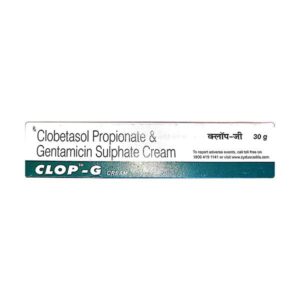MICONAZOLE + CLOBETASOL
Miconazole: Miconazole is an antifungal medication that is commonly used to treat fungal infections of the skin, mouth, and vagina. It belongs to the azole class of antifungals.
The mechanism of action of miconazole involves inhibiting the synthesis of ergosterol, a key component of fungal cell membranes. By disrupting the integrity of the fungal cell membrane, miconazole prevents the growth and proliferation of the fungus, ultimately leading to its death.
Miconazole is available in various dosage forms, including creams, powders, sprays, and vaginal suppositories. The recommended dose and duration of treatment depend on the specific type and location of the infection. It is important to follow the instructions provided by the healthcare professional or the product labeling.
Common side effects of miconazole may include skin irritation, itching, burning, or redness at the site of application. These side effects are usually mild and temporary. In some cases, allergic reactions may occur, characterized by rash, hives, swelling, or difficulty breathing. If any severe or persistent side effects are experienced, it is important to consult a healthcare professional.
Miconazole may interact with certain medications, so it is essential to inform the healthcare professional about all the medications being taken, including prescription, over-the-counter, and herbal products. Additionally, miconazole should not be used by individuals with known hypersensitivity to the drug or its components.
Overall, miconazole is an effective antifungal medication that helps in the treatment of various fungal infections. However, it is important to consult a healthcare professional before using it to ensure its appropriate use and to minimize the risk of any potential side effects or drug interactions.
Clobetasol: Clobetasol is a potent corticosteroid medication used in the treatment of various skin conditions. It belongs to a class of drugs called glucocorticoids, which have anti-inflammatory and immunosuppressive properties.
The main use of clobetasol is to relieve inflammation, itching, and redness associated with conditions such as eczema, psoriasis, allergic reactions, and dermatitis. It is available in various formulations including creams, ointments, gels, and foams, depending on the affected area and the condition being treated.
The exact mechanism of action of clobetasol is not fully understood, but it is thought to work by suppressing the release of inflammatory mediators, inhibiting the migration of immune cells to the site of inflammation, and reducing the actions of certain immune cells involved in the inflammatory process.
The dose of clobetasol depends on the formulation and the severity of the condition being treated. It is typically applied to the affected area once or twice daily. However, it is important to follow the instructions provided by the healthcare professional.
Like other corticosteroids, clobetasol may cause certain side effects. Common side effects may include skin irritation, burning, itching, dryness, or redness at the application site. Prolonged use or excessive application of clobetasol can lead to skin thinning, discoloration, or stretch marks. Other less common but serious side effects may include adrenal suppression, Cushing’s syndrome, and local allergic reactions.
It is important to use clobetasol as directed by a healthcare professional and to avoid using it on large areas of the body, for prolonged periods, or on broken or infected skin without proper medical supervision. It is also crucial to inform the healthcare professional about any pre-existing medical conditions or other medications being used to minimize the risk of drug interactions and potential side effects.

